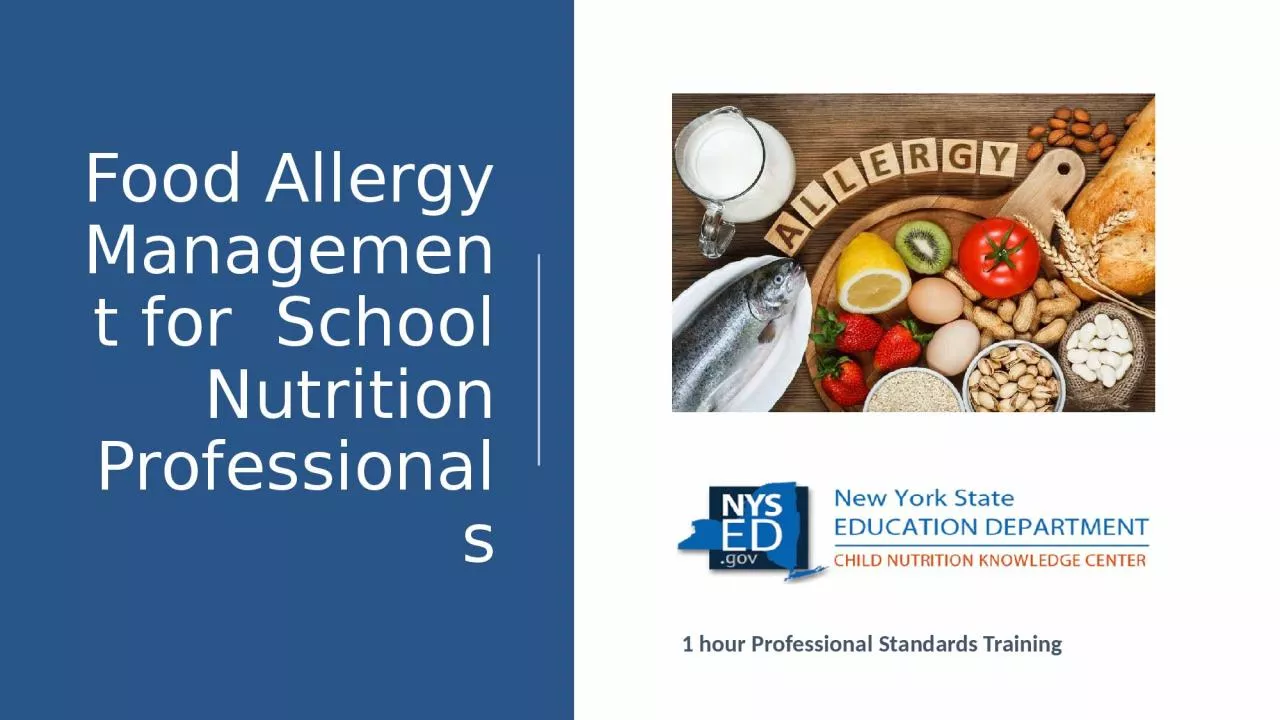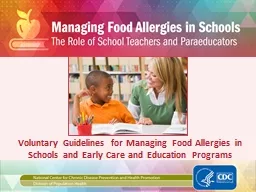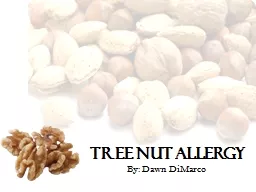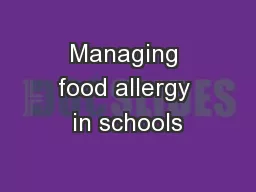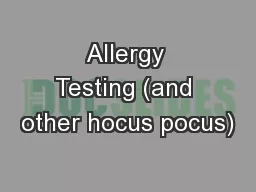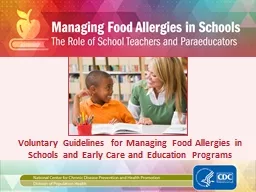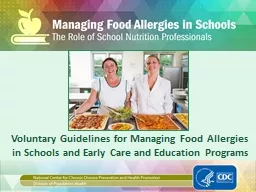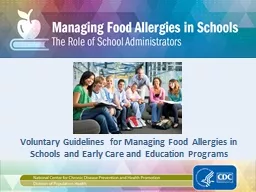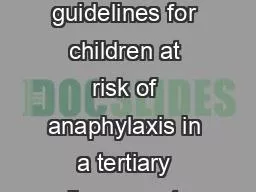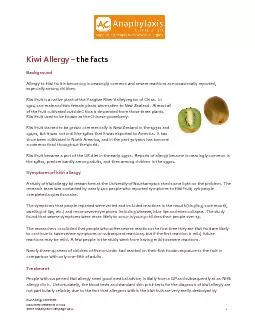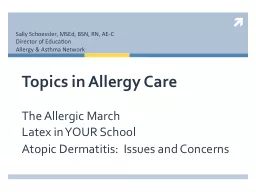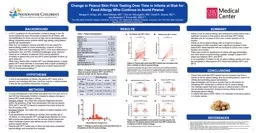PPT-Food Allergy Management for School Nutrition Professionals
Author : scarlett | Published Date : 2022-06-18
1 hour Professional Standards Training 1 in 13 Children has a Food Allergy What is a Food Allergy The role of the immune system is to protect the body from germs
Presentation Embed Code
Download Presentation
Download Presentation The PPT/PDF document "Food Allergy Management for School Nutr..." is the property of its rightful owner. Permission is granted to download and print the materials on this website for personal, non-commercial use only, and to display it on your personal computer provided you do not modify the materials and that you retain all copyright notices contained in the materials. By downloading content from our website, you accept the terms of this agreement.
Food Allergy Management for School Nutrition Professionals: Transcript
Download Rules Of Document
"Food Allergy Management for School Nutrition Professionals"The content belongs to its owner. You may download and print it for personal use, without modification, and keep all copyright notices. By downloading, you agree to these terms.
Related Documents

